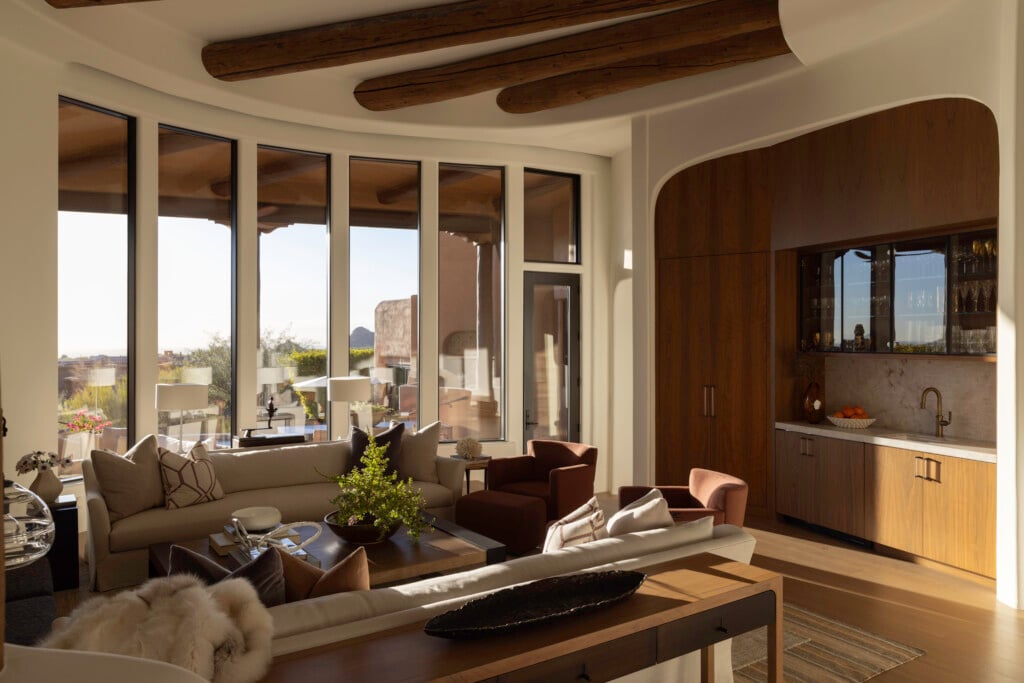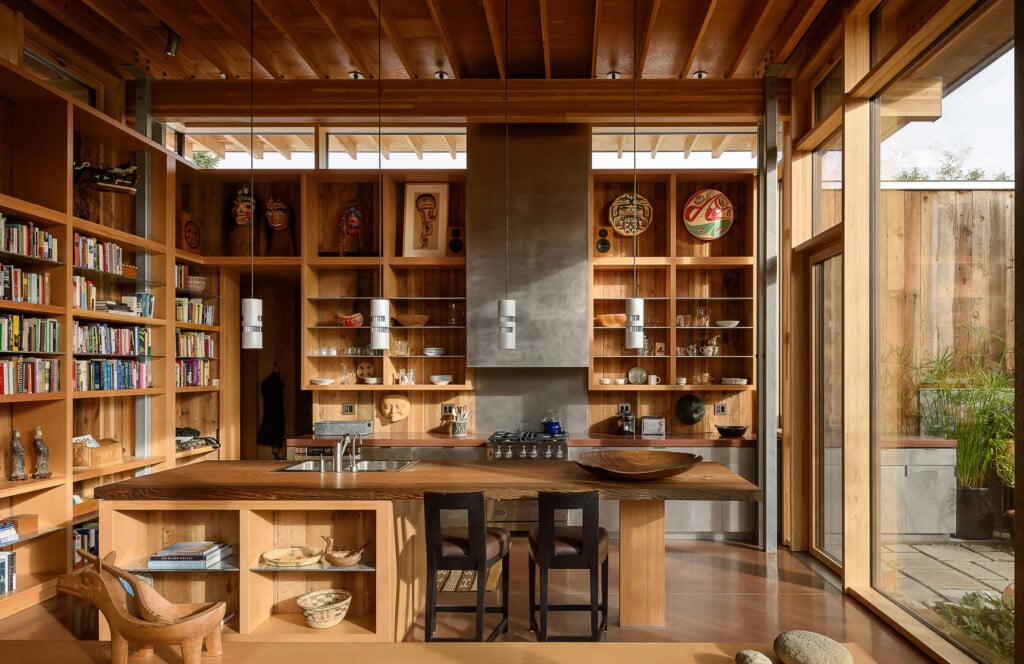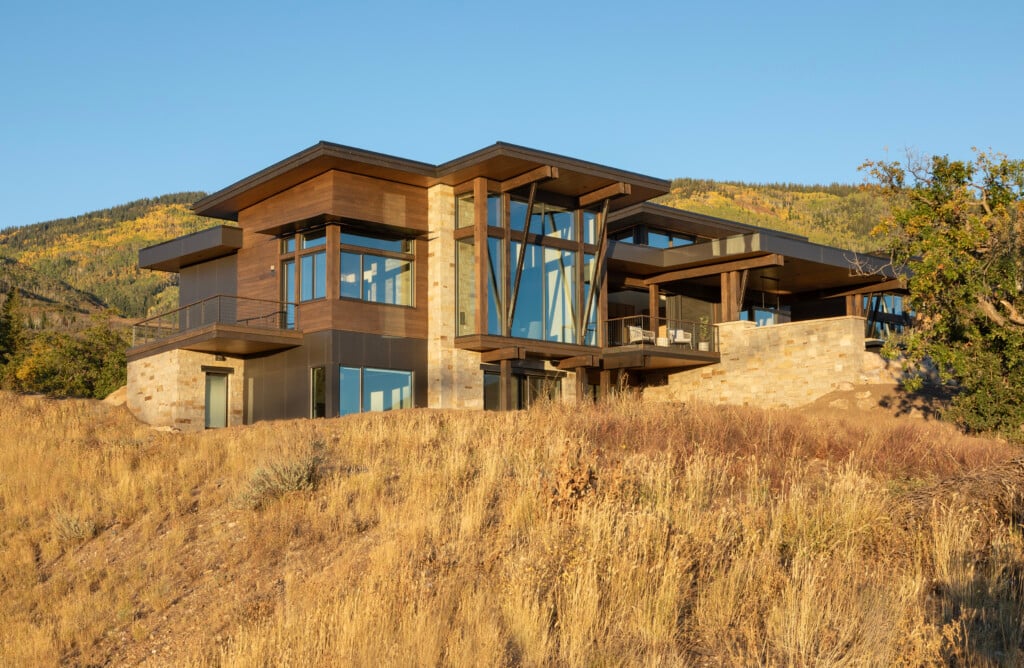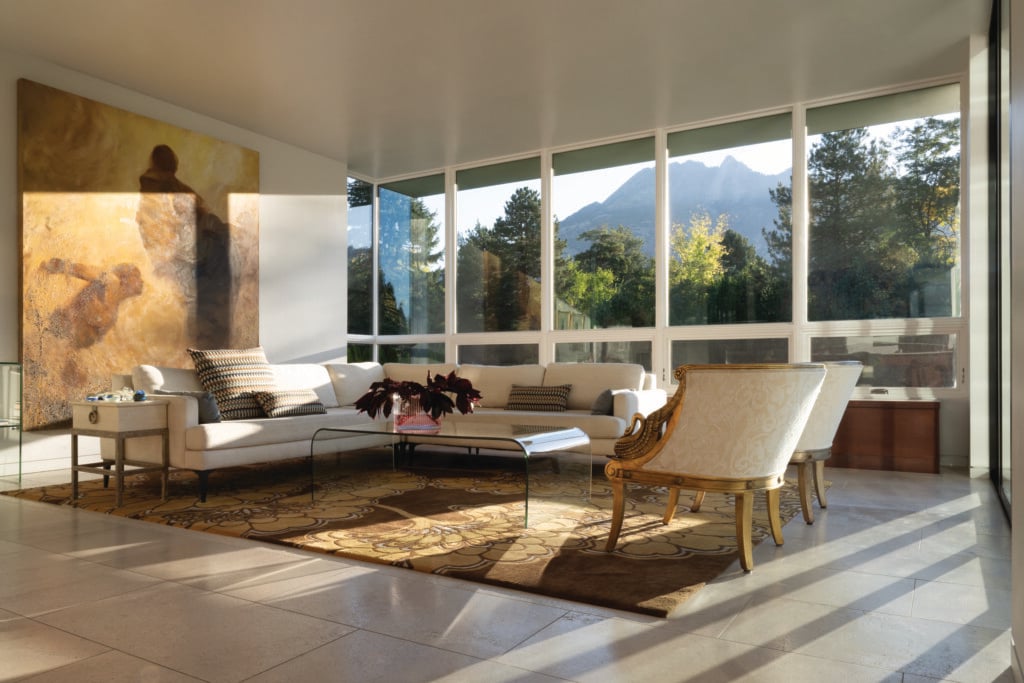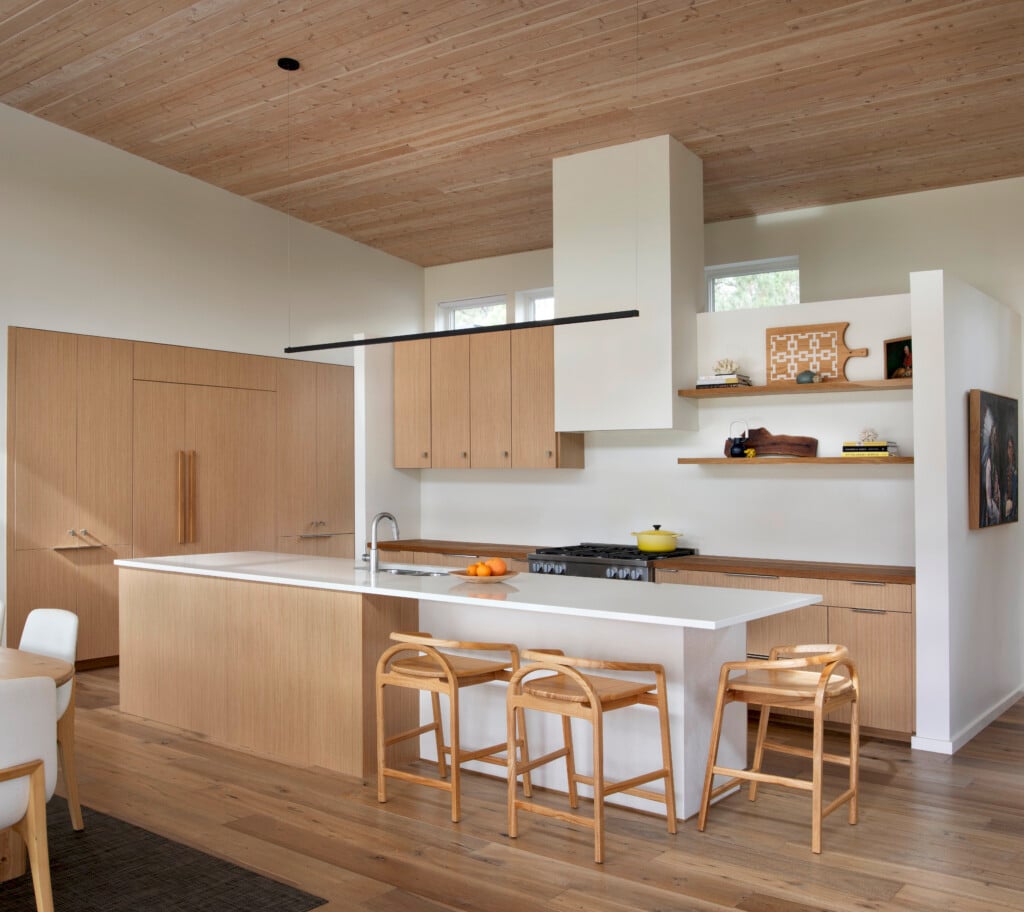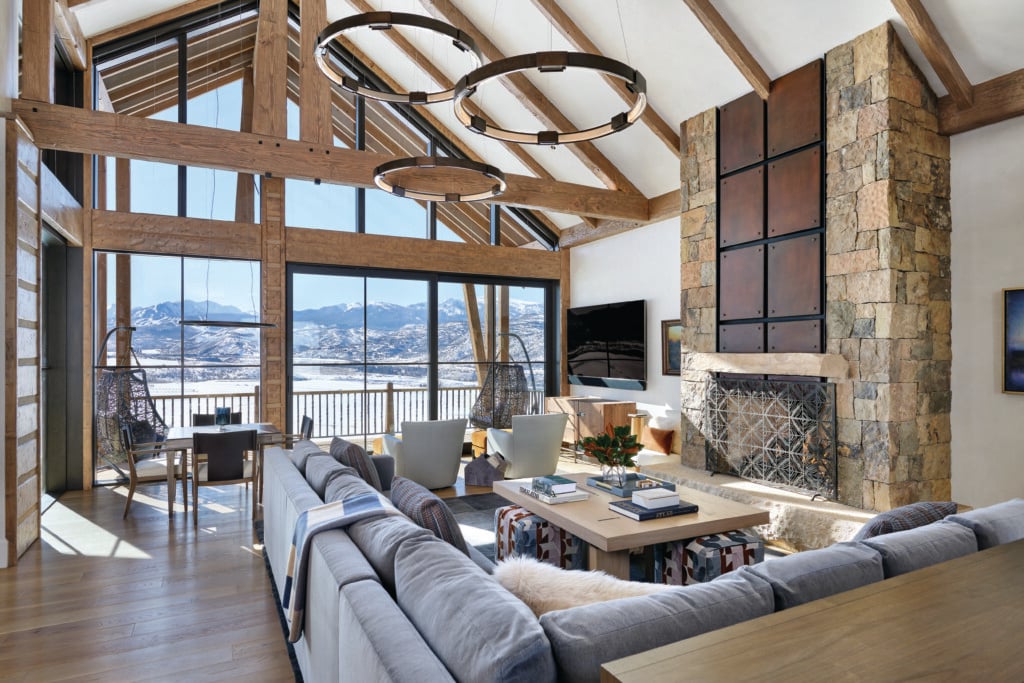Making a Mountain Home Comfortable and Functional Year Round
Key architectural elements that make a big difference.
Designing a mountain home that’s comfortable and functional year-round starts with resilient design. From working in harmony with the home’s site and choosing the best materials, to capitalizing on passive solar design, these tips will ensure your mountain home is not only beautiful but built to thrive in every season.
Site-Specific Design
Great architecture goes beyond aesthetics—it harmonizes with its surroundings, making a home feel like it truly belongs in its setting. Thoughtful design considers not just beauty, but also function, incorporating view corridors, privacy from neighbors, and regional architectural styles.
Beyond looks, site-specific design embraces sustainability, leveraging passive solar benefits, climate conditions, and prevailing winds to enhance comfort and efficiency. A home that feels naturally in sync with its environment isn’t just well-designed—it’s priceless.
Material Selection
Durable, low-maintenance materials like stone and concrete serve as thermal mass, helping regulate indoor temperatures. These materials are especially useful where the structure meets the ground, protecting softer elements like wood from accumulating snow and moisture.
In a harsh climate, it’s wise to embrace materials that naturally evolve over time. Metal can be left to develop a rusted patina, while wood can be pre-weathered, reclaimed, or simply allowed to gray naturally. Instead of resisting nature, good design works with it, making aging materials part of the home’s character.
Windows
Thanks to advancements in window and door technology, you no longer have to choose between expansive views and superior insulation. High-quality systems enhance a home’s ambiance while effectively controlling solar heat gain and loss.
Including large roof overhangs in your mountain home design helps shield windows and doors from harsh weather while blocking direct sunlight in the summer. In winter, when the sun sits lower in the sky, these overhangs allow natural warmth to enter. Another effective strategy is placing solar screens on the building’s exterior instead of inside, creating an extra barrier that keeps heat from reaching the glass.
Aaron Belzer is Director of Design at Farmer Payne Architects, a boutique architecture firm that creates award-winning luxury residential architecture, cutting-edge commercial architecture and offers inspired interior design. View their profile or contact them at 307-264-0080.
Content provided by Farmer Payne Architects.








